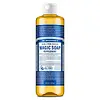What's inside
What's inside
 Key Ingredients
Key Ingredients

 Benefits
Benefits

 Concerns
Concerns

 Ingredients Side-by-side
Ingredients Side-by-side

Water
Skin ConditioningCocamidopropyl Betaine
CleansingSodium Laureth Sulfate
CleansingSodium Cocoyl Glycinate
CleansingSodium Chloride
MaskingGlycerin
HumectantParfum
MaskingPhenoxyethanol
PreservativeSodium Lauroyl Isethionate
CleansingStearic Acid
CleansingAcrylates/C10-30 Alkyl Acrylate Crosspolymer
Emulsion StabilisingStyrene/Acrylates Copolymer
Lauric Acid
CleansingSodium Hydroxide
BufferingCitric Acid
BufferingPPG-7
Skin ConditioningBHT
AntioxidantCoconut Acid
CleansingSodium Palmitate
CleansingSodium Benzoate
MaskingTetrasodium EDTA
Sodium Isethionate
CleansingSodium Stearate
CleansingPEG-4 Laurate
EmulsifyingPEG-4 Dilaurate
EmulsifyingSodium Palm Kernelate
CleansingOryza Sativa Bran Oil
EmollientSodium Lauryl Sulfate
CleansingPEG-4
HumectantIodopropynyl Butylcarbamate
PreservativeTitanium Dioxide
Cosmetic ColorantZinc Oxide
Cosmetic ColorantAlumina
AbrasiveWater, Cocamidopropyl Betaine, Sodium Laureth Sulfate, Sodium Cocoyl Glycinate, Sodium Chloride, Glycerin, Parfum, Phenoxyethanol, Sodium Lauroyl Isethionate, Stearic Acid, Acrylates/C10-30 Alkyl Acrylate Crosspolymer, Styrene/Acrylates Copolymer, Lauric Acid, Sodium Hydroxide, Citric Acid, PPG-7, BHT, Coconut Acid, Sodium Palmitate, Sodium Benzoate, Tetrasodium EDTA, Sodium Isethionate, Sodium Stearate, PEG-4 Laurate, PEG-4 Dilaurate, Sodium Palm Kernelate, Oryza Sativa Bran Oil, Sodium Lauryl Sulfate, PEG-4, Iodopropynyl Butylcarbamate, Titanium Dioxide, Zinc Oxide, Alumina
Ingredients Explained
These ingredients are found in both products.
Ingredients higher up in an ingredient list are typically present in a larger amount.
Citric Acid is an alpha hydroxy acid (AHA) naturally found in citrus fruits like oranges, lemons, and limes.
Like other AHAs, citric acid can exfoliate skin by breaking down the bonds that hold dead skin cells together. This helps reveal smoother and brighter skin underneath.
However, this exfoliating effect only happens at high concentrations (20%) which can be hard to find in cosmetic products.
Due to this, citric acid is usually included in small amounts as a pH adjuster. This helps keep products slightly more acidic and compatible with skin's natural pH.
In skincare formulas, citric acid can:
While it can provide some skin benefits, research shows lactic acid and glycolic acid are generally more effective and less irritating exfoliants.
Most citric acid used in skincare today is made by fermenting sugars (usually from molasses). This synthetic version is identical to the natural citrus form but easier to stabilize and use in formulations.
Read more about some other popular AHA's here:
Learn more about Citric AcidWater. It's the most common cosmetic ingredient of all. You'll usually see it at the top of ingredient lists, meaning that it makes up the largest part of the product.
So why is it so popular? Water most often acts as a solvent - this means that it helps dissolve other ingredients into the formulation.
You'll also recognize water as that liquid we all need to stay alive. If you see this, drink a glass of water. Stay hydrated!
Learn more about Water